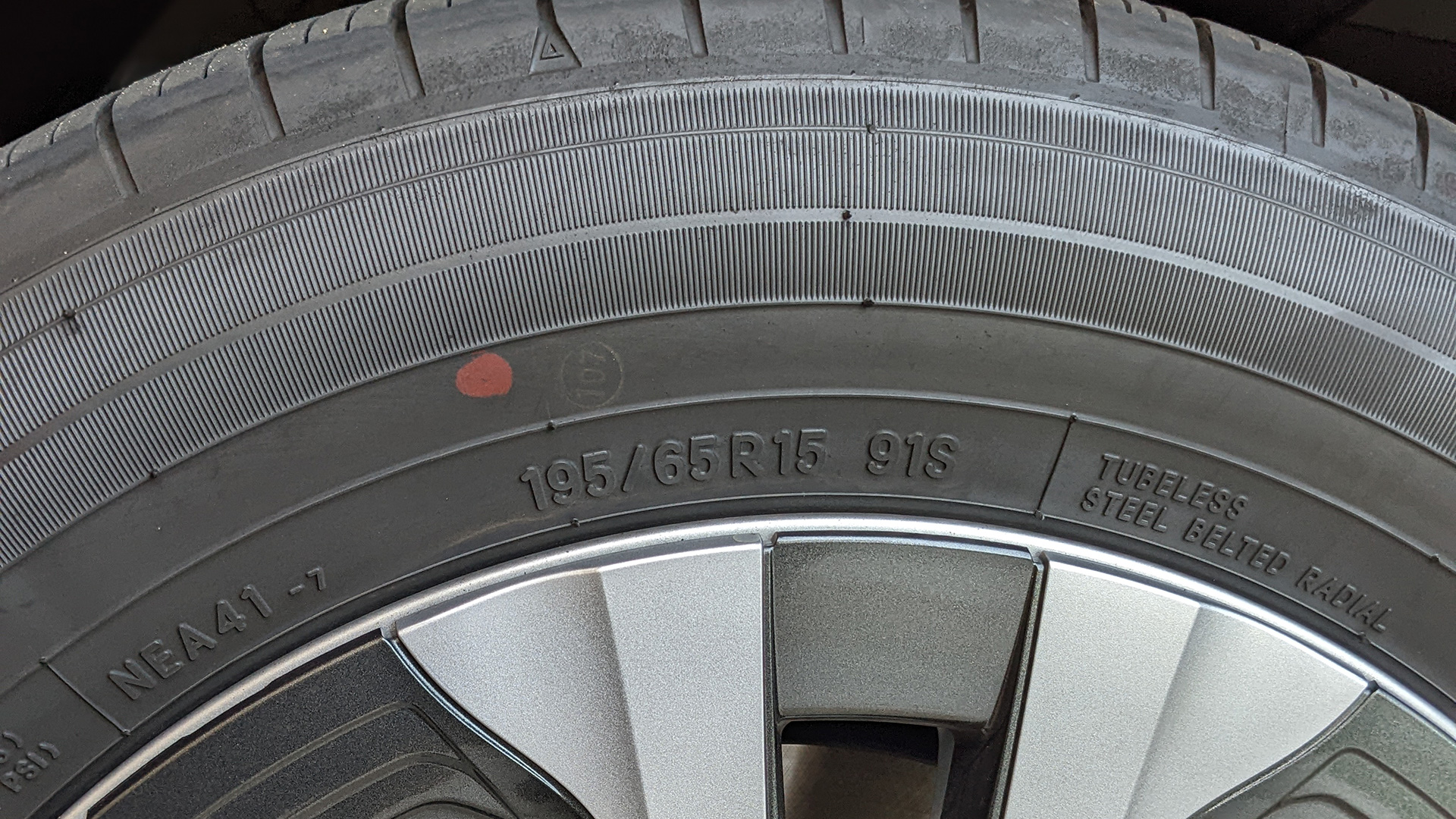Are you interested in learning more about all those letters and numbers on your tire? Previously, we explained tire speed ratings and how to identify them, and now looking at tire size dimensions. Located on the sidewall, the tire code contains information about your tire’s purpose, dimensions, load capacity, and temperature/speed durability. In this guide, we’ll focus on tire tire’s dimensions — typically the first batch of numbers and letters. In the photo above of my factory Toyota Prius Prime tire, the dimensions are 195/65/R15. The “91S” at the end identifies the tire’s load index (91) and speed rating (S).
Section Width
The three-digit number often found at the beginning of your tire size is the section width, in millimeters. That’s the width of your tire, from side-to-side when looking at the tread. In our example photo, that would be 195 or 195mm.
Sidewall Aspect Ratio
Following the “/” is the tire’s aspect ratio, often designated by a two-digit number. This value indicates your tire’s height, but it’s unlike the section width since it’s indicated as a percentage of the section width. In the above example, “65” would be the aspect ratio, but it’s not 65mm, it’s 65% of 195mm. That means the sidewall height of the tire is 126.75mm or about 5 inches.
The larger the aspect ratio, the “taller” your tire is. You may have heard of “low-profile tires”, which means the tire has a low aspect ratio and isn’t very tall.
Tire Construction

Illustration credit: Fehmiu Roffytavare / Shutterstock.com
After the section width and aspect ratio, you’ll find the tire’s construction type. These days, you’ll mostly find “R”, “D”, “RF”, or “ZR”, but some tires may have “B” or even “-“. The letter R is used to indicate radial tires, which are the most common. If you see ZR, those are radial tires that have a speed rating higher than V. Radial tires are defined by their plies that are laid perpendicular to the direction of travel. Plies are the layers of strong cords that construct a tire, typically from a blend of polyester, steel, and fabric before coated with rubber.
D, B, and – are for bias-ply tires, or tires with diagonal plies. These days, they’re often seen on motorcycle and trailer tires. You might also see them being referred to as conventional, x-ply, or cross-ply tires.
Tires with the RF designation are run-flat tires, which can continue to be driven a limited distance even after a puncture, at a limited speed — typically 50 miles at 50 mph.
Wheel diameter
The final pair of numbers in the tire size portion of the tire code is the diameter of the wheel, in inches. When purchasing replacement tires, you have the option of getting wider or skinnier tires that are taller or shorter, if you want. But you must get a tire that fits the diameter of your wheel. In our original example, my Toyota Prius Prime comes with 15″ wheels from the factory, which is why it has 15″ tires.
Tire type
While the tire I used in my example photo doesn’t have it, some tires will have a letter or letters before the section width. Most often it is the letter “P”, which represents a P-metric tire. Those are tires made to meet standards for the U.S. market for passenger vehicles. In my example, there are no letters at the beginning, which means it’s a Euro-metric tire.
Euro-metric and P-metric tires that have the same size are identical in their dimensions. They may however, have slight differences in their load capacity calculations and inflation pressure tables. Generally, if the two tires have the same speed rating, dimensions, and performance category, they’re considered equivalent and can be used interchangeably. In other words, you don’t have to put too much weight on the tire type.
Also, you may also see the letters “LT” to designate the tire type. These are tires designed for light trucks and typically require higher inflation pressures than passenger tires.
